Baby Audio Crystalline Reverb Plug-In Review
Baby Audio recently released Crystalline, an algorithmic reverb plug-in for Mac and PC. We’re not sure what infant formula they’re consuming in Denmark, but Crystalline is another winner in their relatively short history. We subjected Crystalline to a long-term evaluation with a team of five reviewers – their comments in quotes below – and determined Crystalline to be a standout in a very crowded reverb plug-in market.
Starting with TAIP, their tape emulation plug-in, Baby Audio has hit upon a signature interface and design aesthetic that has not only provides visual branding, but a unique user experience. Gone is the acid trip of their first plug-in, I Heart NY, or the Worst Of The 80s fashion sense of Comeback Kid, they have now settled on a simplified version of Native Instruments’ soft-on-the-eyes Massive X, a soft-white background with embossed buttons and a simple, yet sophisticated visual identity for each feature. There are only six sections to Crystalline, Reflections, Depth, Clean-Up, Shape, Output and a visual representation of the reverb’s waveform in action, as well as the Start/End sync points in the center pane.

For a limited time only! Up to 80% off all Waves Bundles. PLUS click the banner above or the Go button for an additional 10%! This is Waves best deal yet! Get yours today before this special ends! GO!
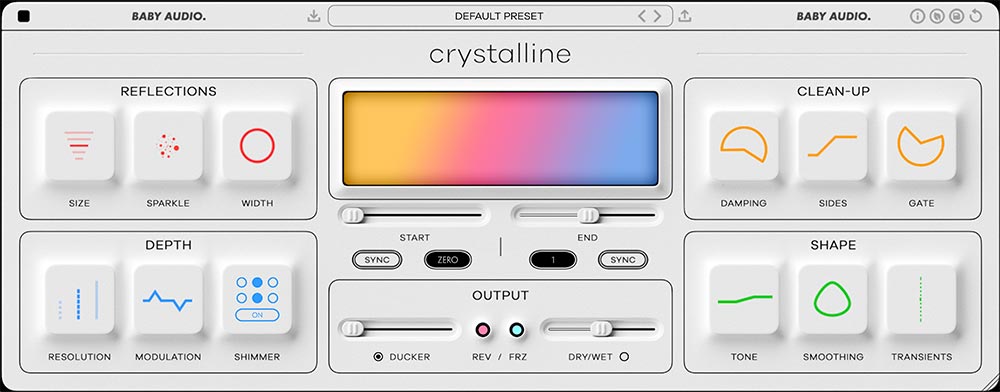
The Reflections section has three main parameters, Size, Width and Sparkle. Size is simply the space’s volume (Tiny, Small, Medium, Large and Spacey), Width pertains to the stereo image and Sparkle is a sonic maximizer to bring out the higher frequencies. What makes Sparkle work so well is that it doesn’t make things brittle and harsh, “maintaining a sweetness that when used economically adds a delightful clarity.” Using the End slider underneath the display, which controls the reverb’s tail length, with the Size attribute can be a great starting point. “It’s subtle, but separating the tail length and the room size was such a savvy decision by Baby [Audio]…the possibilities here alone allow for immense creativity,” related one evaluator. This was also noted by our other reviewers who found enormous potential with this separation. “From snare hits to synth stabs, I would always start with a large room with a short tail to get things funky and go from there,” noted another evaluator.
Now is probably a good time to pause on the feature set and discuss just how amazing Crystalline sounds. Being a modern algorithmic reverb, it has a very clean sound, but is not antiseptic in the least bit. Two words that kept appearing in our reviewer’s evaluation sheets were “sweet” and “musical.” Sure, the word musical definitely gets overplayed in many reviews these days, but not combined with sweet, which we feel is the perfect description for Crystalline’s sonic signature. “It just makes everything I put on it sound delicious,” described one reviewer. “Other reverbs I’ve used, both hardware and software, can make something sound bigger, but more appetizing? Not so much.” One of the reasons is there is literally “no grit” or grain to the reverb. It’s very soft and lush with just the right amount of character and personality to make almost everything you throw it on sound, well “sweet.”
The Depth sections has three attributes, Resolution, Modulation and Shimmer. Resolution pertains to how much of your CPU’s muscle you want to devote to Crystalline, resulting in a more refined and detailed sound. Our evaluators tended to push this as far as would go without bonking their DAWs. In addition, we recommend boosting the resolution when Freezing tracks in your DAW to emphasize all of Crystalline’s strengths. Modulation is more of a chorus effect, using pitch shifting to broaden and fatten the sound. This was used conservatively by our evaluators who found Crystalline’s other parameters made more of a positive impact on the overall sound. Shimmer is another one of those Baby parameters that goes beyond other reverbs to control a very specific aspect of the reverb. In this case, it uses equalization to separate the high frequencies from the reverb’s tail and allow you to control their decay. This is a separate decay from the End attribute, allowing the higher frequencies to, yes, “shimmer into the afterlife.” You can set the cutoff frequency as well as add a multiplier to shape and elongate the result. Our staffers found it worked great on gongs, cymbals and ethereal synth patches.
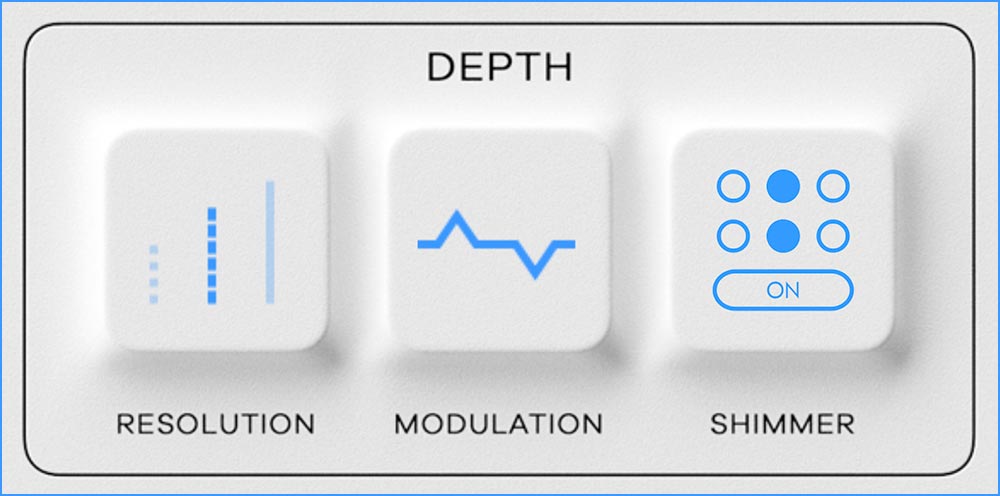
Baby Audio Crystalline – Depth Controls
With Crystalline, Baby Audio went to war against muddy reverb. Not content to let a lush reverb, no matter how lovely, soak up all the room in a mix – like a 400 lbs guy trying to wedge himself into a coach seat – Baby developed several parameters in the Clean-Up and Shape sections to calm things down. Damping is a dual filter that controls the reflections at the top and bottom of the spectrum, if they start to overwhelm the material. Sides is a brilliant parameter that squeezes the stereo field solely in the low frequencies to create a mono signal. “I found Sides to be an intelligent way to address boominess in low frequency sounds that you want to give a little reverb flavor,” observed one evaluator. Gate, with Threshold and Release functionality, is a way to limit a reverb’s after effects in busy material, or channel your inner Phil Collins to recreate his famed 80s drum sound.
The Shape section can also assist to prevent muddiness by contouring the reverb’s personality. Smoothing does just want you expect, “rounds off the corners of harsh material without losing its impact” with the implementation of special EQ models. Tone is another EQ formula to make material either brighter or darker sounding. Our reviewers found it a bit too broad to be useful in mainstream applications, but it was effective on saxophone and female vocals in the lower registers. Transients is Baby’s answer to help shape the drum and percussion reverb for maximum effect. It shifts the attention in the envelope to focus on the attack or the sustain “to go from weightless to a heavier vibe.”
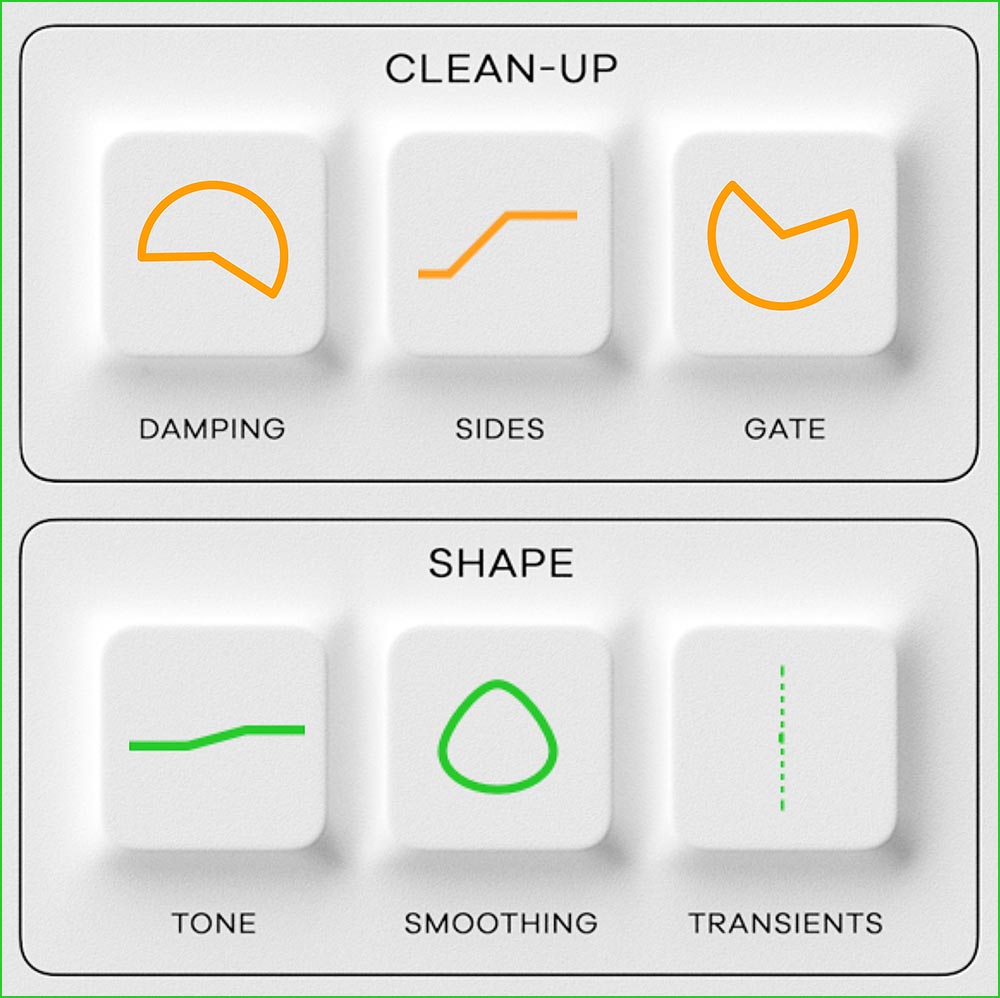
Baby Audio Crystalline – Clean-Up and Shape Controls
The Output section features a Ducker, yet another methodology to avoid muddiness, that drops the reverb of an incoming signal. You can achieve some minor Chainsmokery pumping action with it, but it really could use some refinement. There’s a Reverse function that can be used for sound design or for creating unique percussive sounds, and a Wet/Dry slider. Rounding out the section is a Freeze function for holding the reverb in place without decay. “This probably would be a cool feature for DJing, but it seems a tad out of place on any DAW besides Ableton Live.”
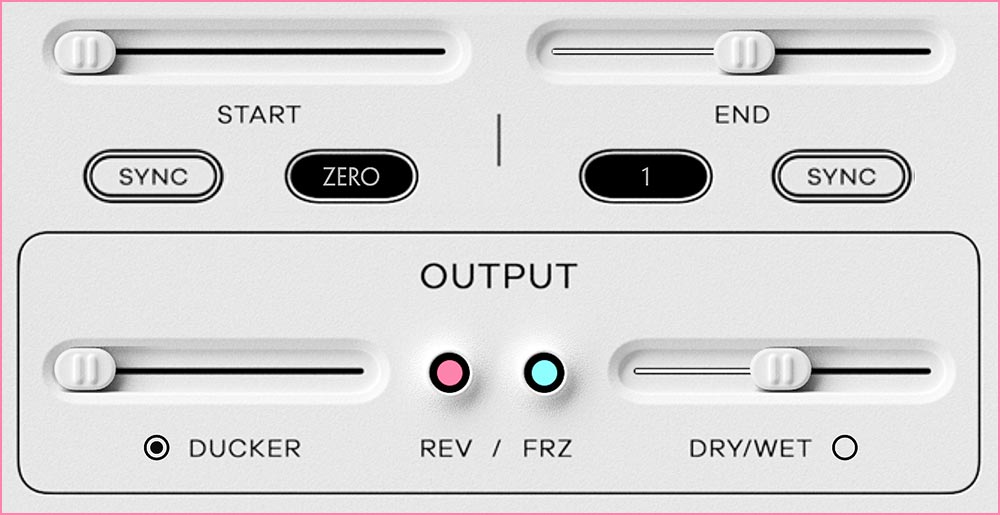
Finally, Crystalline allows you to beat sync the Attack and Decay times of the reverb or dial it in via classic Pre-Delay and Delay parameters. This is a contemporary way of dialing in character and is especially fragrant on pumping electronic music. Again, the underlying motive is to keep the reflections as distinctive as possible to eliminate a swampy mix, but beat sync’d control of the reflections have musical benefits as well. “When wading into more ambient realms, or dropping listeners off the ledge into a breakdown, the Start/End feature makes it easy to get spooky rhythms and undulating washes,” described one evaluator.
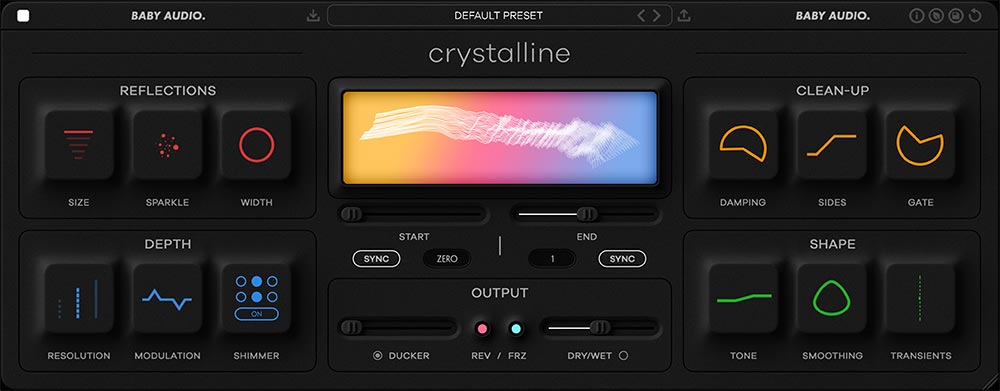
Crystalline can flip between Light and Dark Mode by toggling the square in the upper left corner
Crystalline Features:
- Modern sound all its own
- Beat sync’d reverb start and end times
- Provides simple, yet creative control to shape your reflections
- Many controls to eliminate muddiness
- Plugin window fully resizable
- Plug-in formats: VST, VST3, AU, AAX
- Platforms supported: Mac OS 10.7 and up. PC Windows 7 and up
- Apple MacBook Pro Native M1 Compatibility tested and confirmed by FutureMusic

The easiest way for electronic musicians to get their music onto Spotify, Apple Music, iTunes, Amazon Music, Tidal, Instagram, Facebook, TikTok, Pandora, Twitch & much more! Click the banner above or the Go Button to save 7% off of your signup! GO!
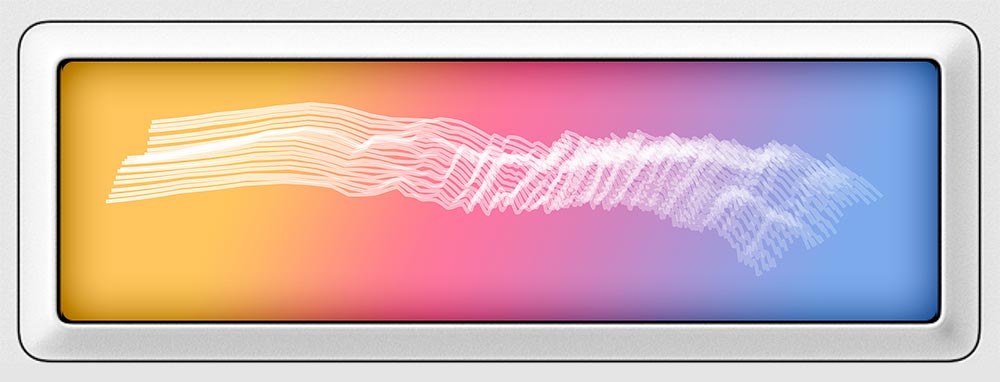
One aspect that our reviewers universally spotlighted as a “meh” was the waveform waterfall display in the center of the plug-in, since it “really doesn’t do anything.” Considering what other plug-in developers, such as FabFilter, achieve with their visual depictions, we think Baby Audio could have done a lot more with this visualizer.
Conclusion
For electronic musicians, hip-hop producers and even rock producers who are looking for a fresh take on reverb with outstanding sound quality, Baby Audio’s Crystalline is impossible to beat. Liquid Drum ‘n’ Bass, Deep House, Chillout, Ambient artists will adore what Crystalline can do to create rhythmic ambiences. Big Room, House and EDM producers will love the magic Crystalline can weave on vocals and synths. If your genre wasn’t name-checked, don’t worry, just about any DAW will welcome Crystalline into their reverb stack. Highly Recommended.
Baby Audio Crystalline Rating: 97%
Cheers:
+ Sound Quality
+ Innovative
+ Futuristic
+ Creative
+ Huge Value
+ Anti-Mud Features
+ GUI Aesthetic & Resizable
Jeers:
– Visual Display
– Ducker
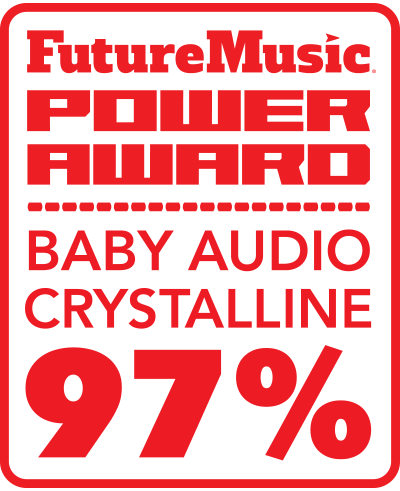
Baby Audio’s Crystalline costs $99 / €99 and is available now. (Intro Sale Going On Now: $49 / €49!)
The Future: For Crystalline 2.0, we’d like to see Baby add some real functionality to the center display. With all the anti-mud features, some sort of visualization of murky and soggy buildup would be very useful to see how certain parameters can clean things up. And even with all the cool functionality of the non-numeric modulators, having the ability to tweak the reverb’s character within the display should be considered. We’d also like to see more attention given to the Output section. The Ducker could use a few additional features to create musical reverb waves and washes and we’d love to see what Baby’s brain trust could achieve by taking the Reverse concept to the next level.









